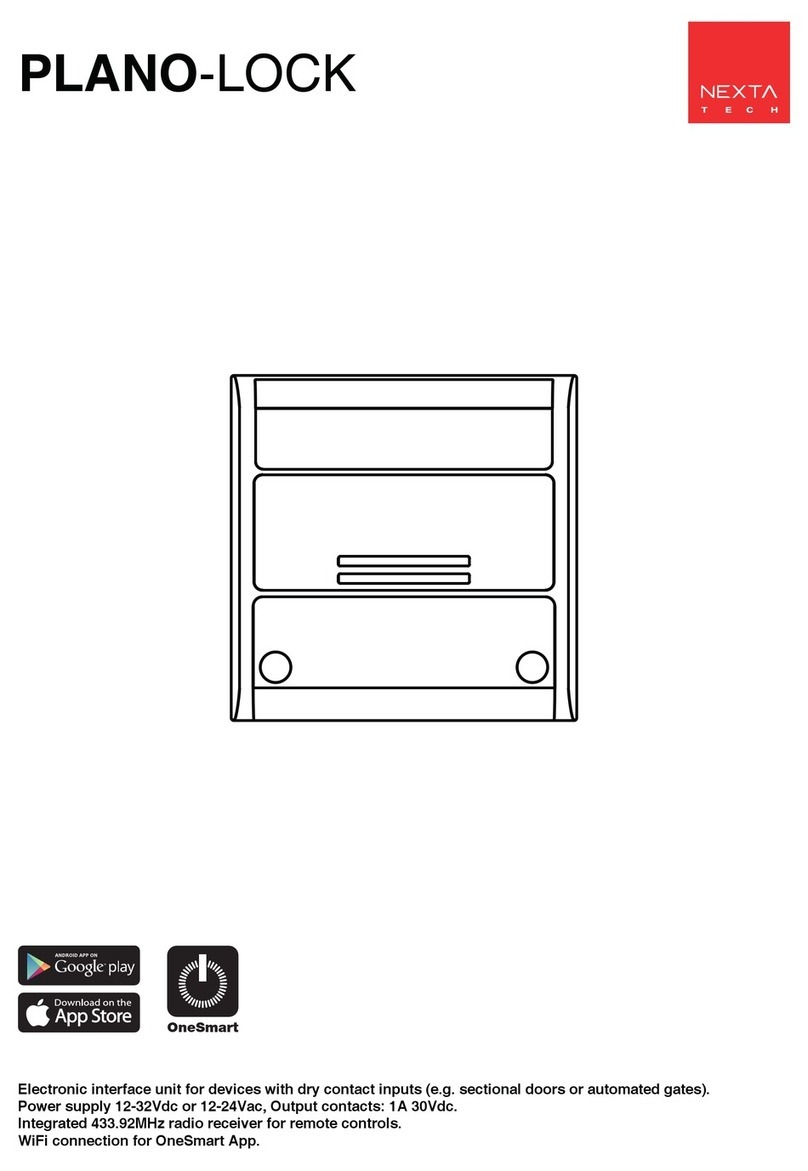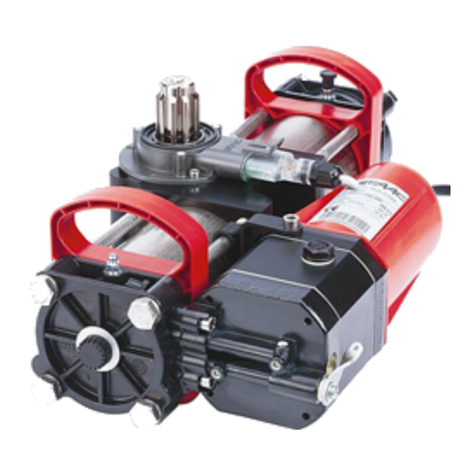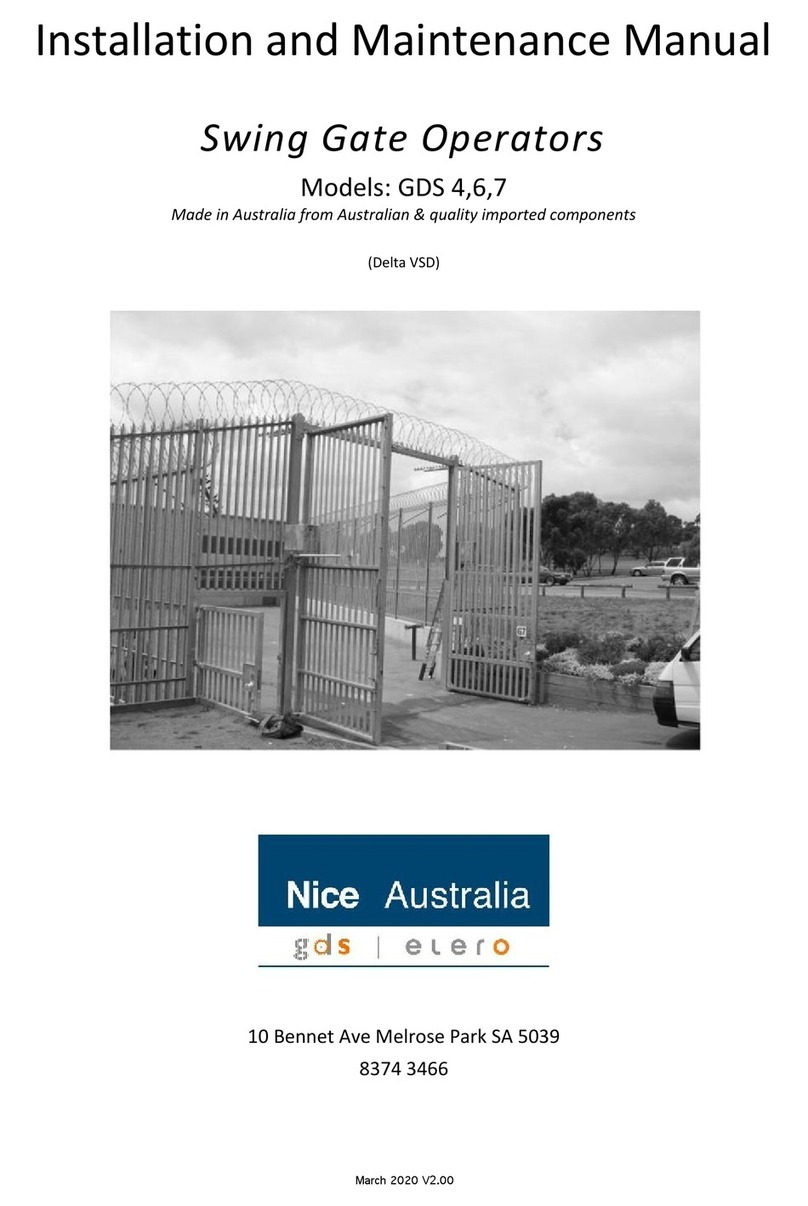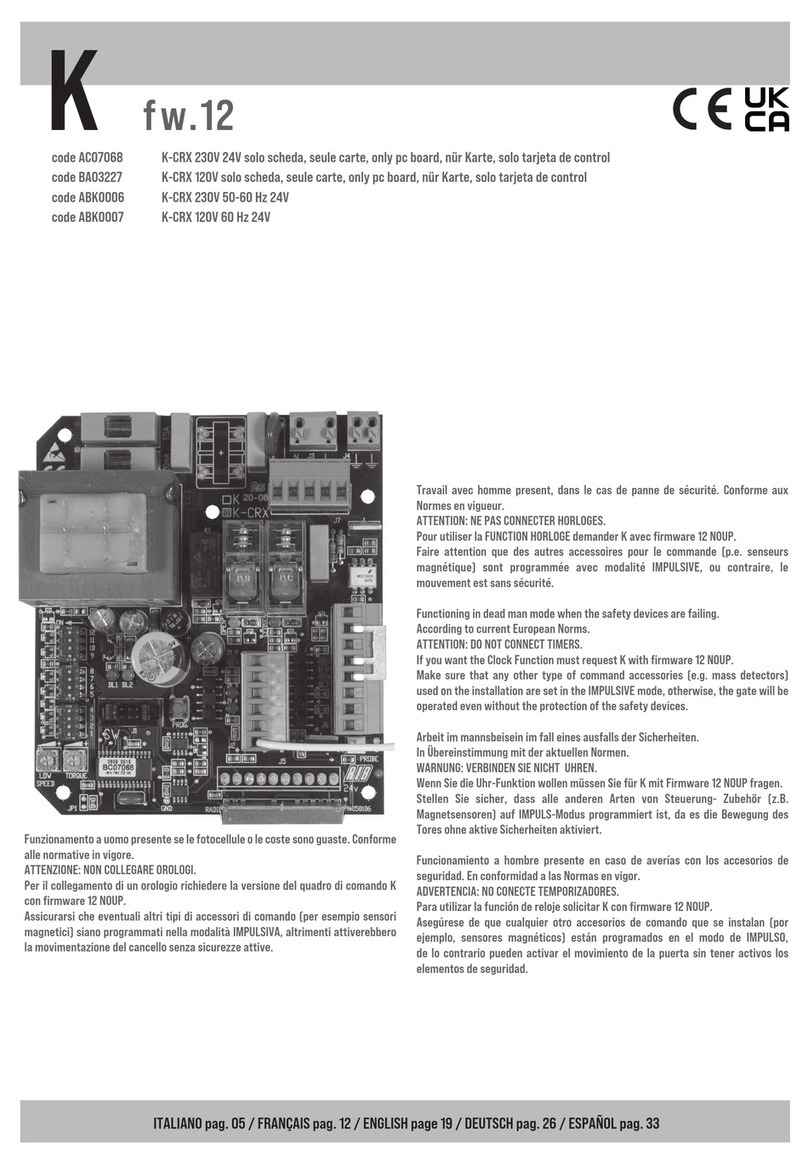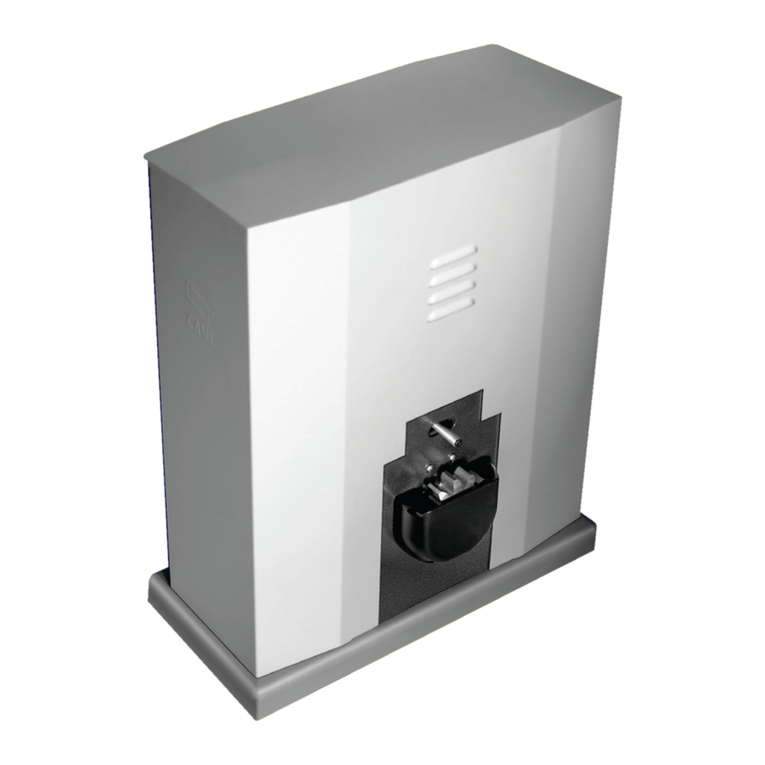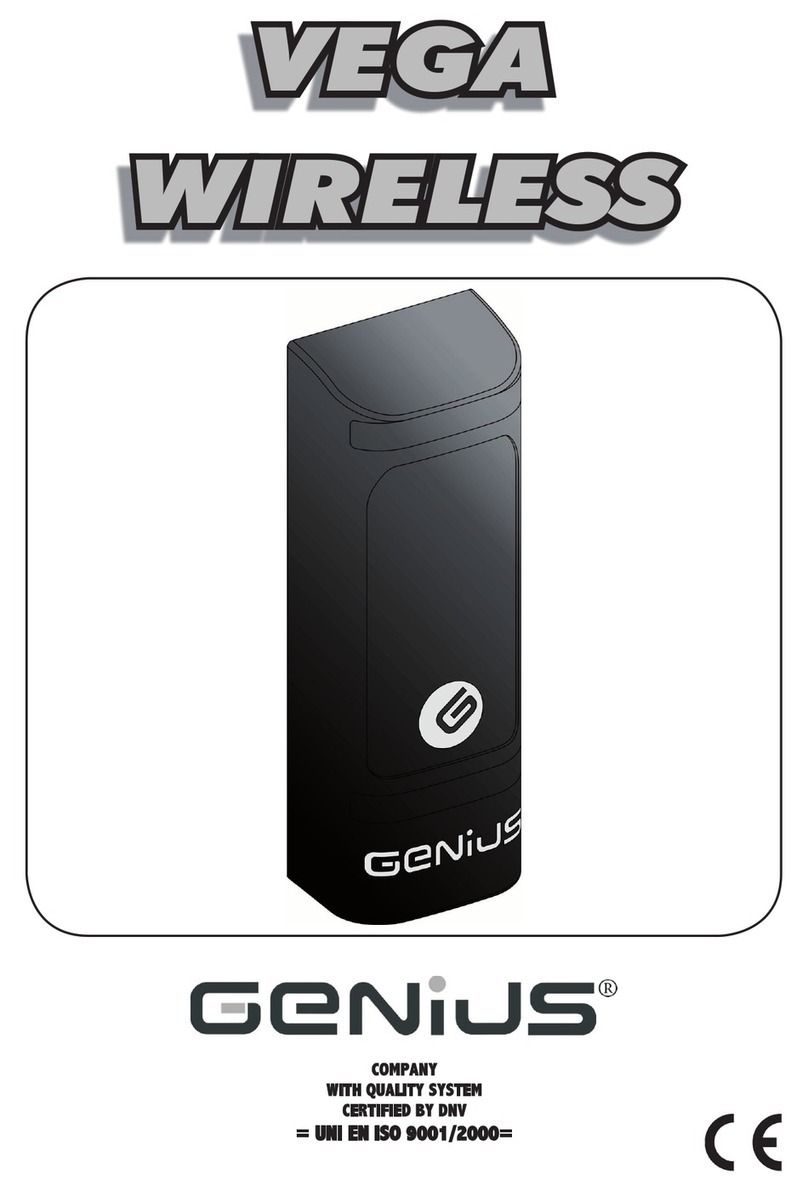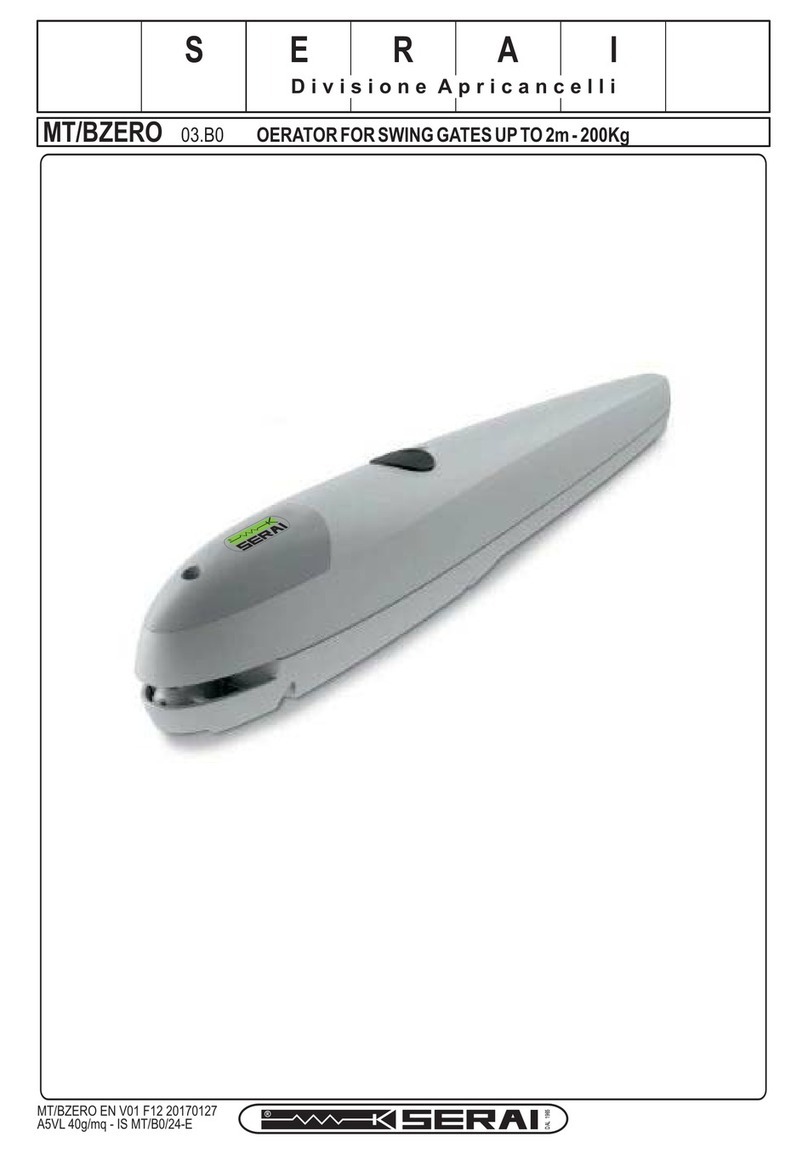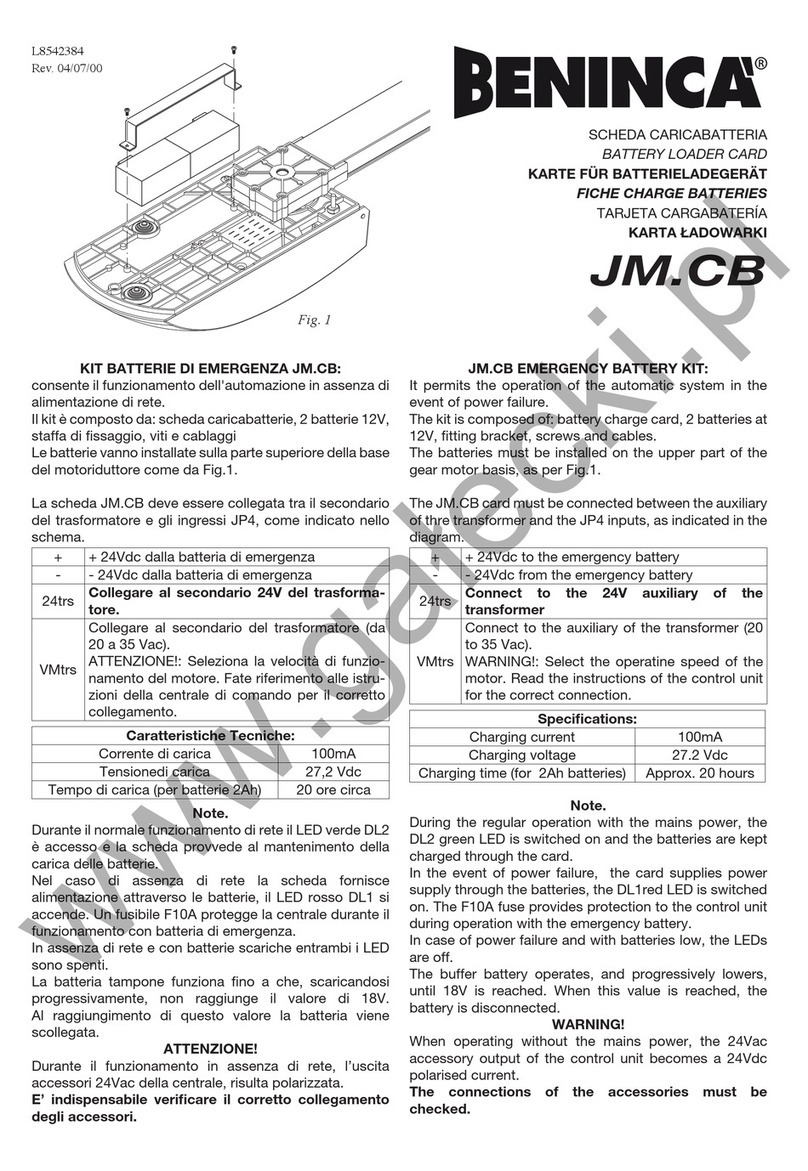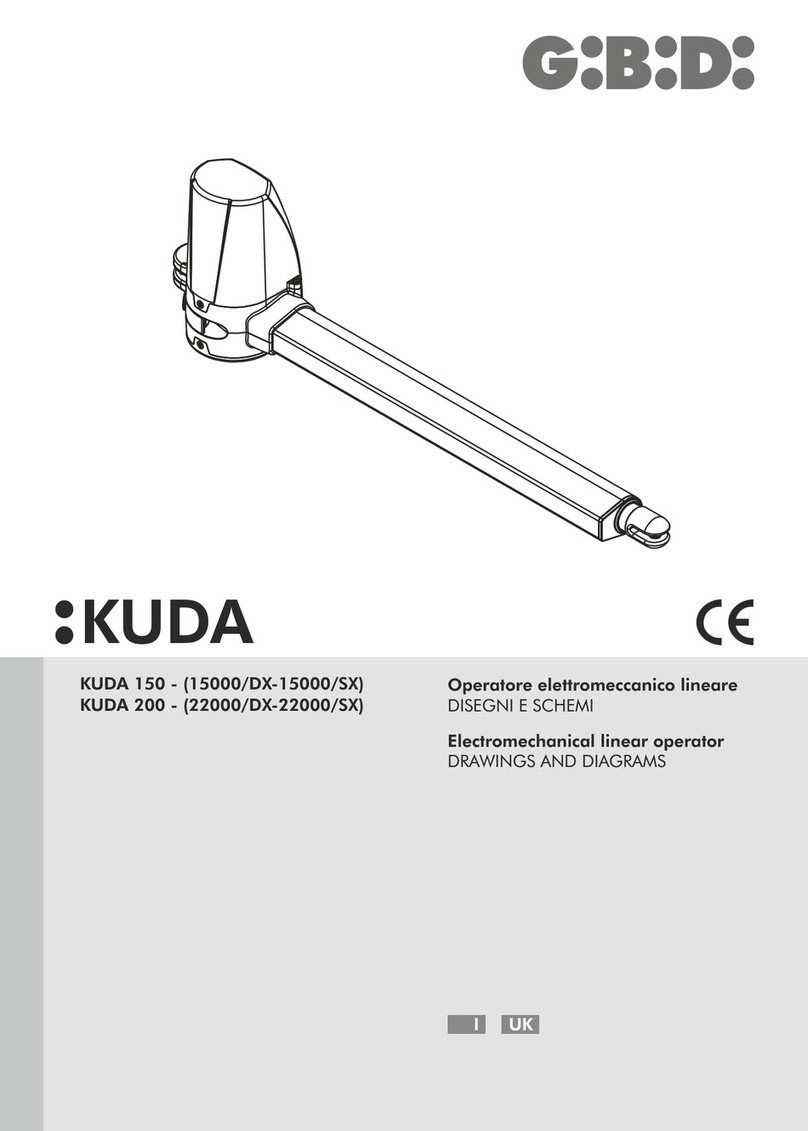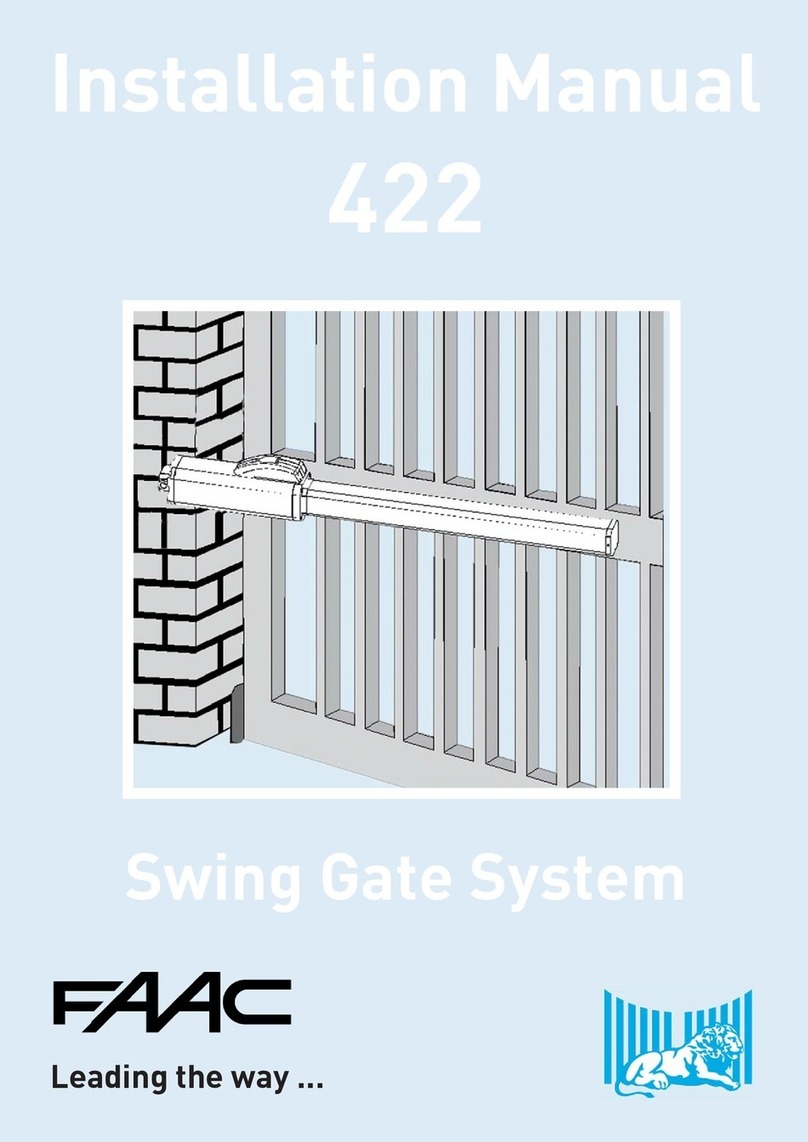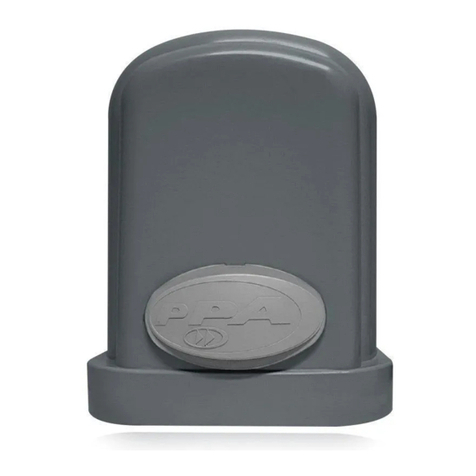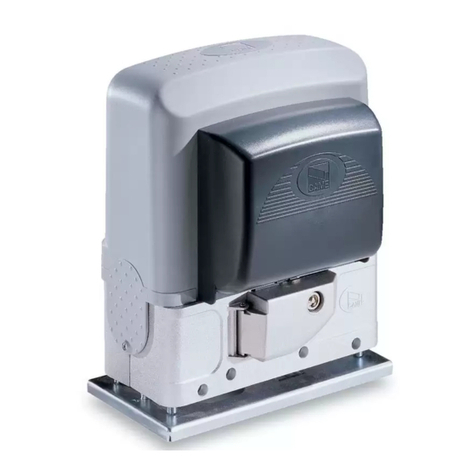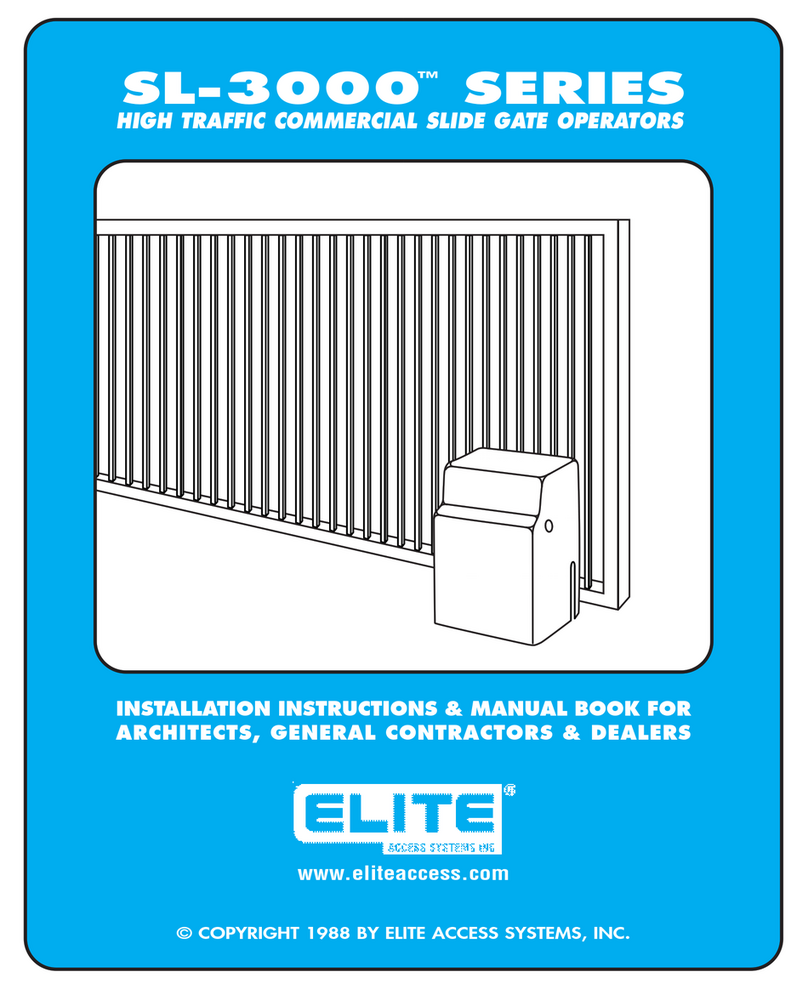Viking Q-4 User manual

VIKING
VIKING BLUE ENABLED
SOLAR EFFICIENT OPERATION
installation instructions
class II, class III, and class IV
heavy-duty commercial vehicular slide gate operator
and safety information

the viking Q-4
™
slide gate operation
The Q-4™ incorporates a powerful and efcient DC motor, a high ampacity
power supply, an integrated battery back-up system and intelligent controller. The
incorporation of these features results in outstanding performance on heavy duty
slide gates. The advanced motor control circuit driving the motor guarantees long life.
The Q-4™ brings the advantages of DC gate operators into heavy duty applications.

Q-4 Vehicular Gate Operator • Revision

1
2
23
28
7
8
6
5
9
10
11
12
4
25
29
20
19
22
3
18
24
16
21
26
27
15
13
31
17
30
14
Item Description
Part No.
1 Main Chassis VAQ4CH10
2 Chassis Top Cover VAQ4CTC10
3 Chassis Front Cover VAQ4CFC10
4 Chain Guard VAQ4CHGA10
5 Q4 Motor VAQ4MO
6 Motor Brake Q4MOB10
7 Limit Switch (2) DULS10
8 Limit Switch Cam L3LC10
9 Limit Switch Holder L3LH10
10 Limit Switch Gear Box DULSG
11 Electric Box DUEB10
12 Control Board DUPCB10-Q4
13 Q4 Battery DUBAQ4
14 Q4 Modular Power Supply Q4MPS10
15 Transformer 15amp DUTT15
16 Power Supply Q4PSH10
17 EMI Board Q4EMI
18 Alarm DUAL10
19 Limit Switch Harness Q4LSH
20 Power Harness Q4POH10
21 Power Supply Housing Q4PSH10
22 Battery Retainer Q4BREA10
23 Fuse Kit Q4FUSKT
24 Chain #50 x 10' x 3 Q4C50CHK
25 Sprocket 50B25 Q4S50B25
26 Idler Pulley Q4IDPLY
27 Idler Bushing Q4IDBSH
28 Warning Placard DUWPA
29 Reset Switch (20 Amp) DUMRS20
30 Reset Switch (10Amp) DUMRS10
31 120V Receptacle
Overall Dimensions
Weight 185 lb.
TECHNICAL SUPPORT 1 800 908 0884
i
PARTS DIAGRAMPARTS DIAGRAM
WARNING - For Installation By Qualified Personnel Only.
20"
14"
26"
0.625"
15.75"
Center of
Drive Chain
26"
13.75"
11.75"
2.60"

TECHNICAL SUPPORT 1 800 908 0884 1
TABLE OF CONTENTSTABLE OF CONTENTS
Parts Diagram/Parts List . . . . . . . . . . . . . . . . . . . . . . . . . . . . . . . . . . . . . . . . . . .i
Important Safety Information
Important Safety Instructions ......................................2
Important Installation Instructions .................................2-3
Maintenance/General Safety Precautions ..............................4
Terminology ..................................................5
Photo Beam (non-contact sensor) Installation ..........................6
Edge Sensor (contact sensor) Installation ..............................7
Manual Release ................................................7
Audible Alarm Reset Switch Installation ..............................8
Warning Placard Installation ......................................8
Important Installation Information ..................................9
Specifications .................................................9
Plans of Installation . . . . . . . . . . . . . . . . . . . . . . . . . . . . . . . . . . . . . . . . . . . . .10
Plan of Installation – Concrete Pads . . . . . . . . . . . . . . . . . . . . . . . . . . . . . . . . . .11
Gate Operator Installation
Step 1 through 3 – Operator Installation ............................12-13
Electrical Installation
Step 4 – Electrical Installation (120/220 VAC) ..........................14
Step 5 – Power Connections ......................................15
Gate Operator Installation
Limit Switch Connections ........................................16
Step 6 through 8 – Limit Switch Setup .............................16-17
Special Features
Fine Tune Limit Setting .........................................18
Electrical Installation
Master/Slave Connections ........................................19
Vehicular Loop Detector Installation
Loop Layout Diagrams ..........................................20
Installation Guidelines ...........................................21
Loop Rack Installation . . . . . . . . . . . . . . . . . . . . . . . . . . . . . . . . . . . . . . . . . . . . . .22
Accessory Connections
Open Commands; Safety Connections ................................23
Radio Receiver ................................................24
Guard Station .................................................25
Special Features
Auto Open Feature . . . . . . . . . . . . . . . . . . . . . . . . . . . . . . . . . . . . . . . . . . . . . . . .26
Intelligent Obstruction Sensor (Primary Entrapment Protection) .............27
Fail Safe/Fail Secure Operation; Hold Open Timer .......................28
Optional VikingBlue™ Wireless Master/Slave Installation . . . . . . . . . . . . . . . . . .29
Optional VikingBlue™ Diagnostics Software Installation . . . . . . . . . . . . . . . . . . .30
Troubleshooting . . . . . . . . . . . . . . . . . . . . . . . . . . . . . . . . . . . . . . . . . . . . . . . .31-33

TECHNICAL SUPPORT 1 800 908 0884
2
WARNING - Not following these instructions may cause severe injury or death to persons.
IMPORTANT SAFETY INFORMATIONIMPORTANT SAFETY INFORMATION
IMPORTANT SAFETY INSTRUCTIONS
WARNING – To reduce the risk of severe injury or death:
1. READ AND FOLLOW ALL INSTRUCTIONS.
2. Never let children operate or play with gate controls. Keep the remote control away from children.
3. Always keep people and objects away from the gate. NO ONE SHOULD CROSS THE PATH OF
THE MOVING GATE.
4. Test the gate operator monthly. The gate MUST reverse on contact with a rigid object or when
an object activates the non-contact sensors. After adjusting the force or the limit of travel,
retest the gate operator. Failure to adjust and retest the gate operator properly can increase the
risk of injury or death.
5. Use the manual release only when the gate is not moving.
6. KEEP GATES PROPERLY MAINTAINED. Read the owner’s manual. Have a qualified service per-
son make repairs to gate hardware.
7. The entrance is for vehicles only. Pedestrians must use separate entrance.
8. Every gate operator installation M
MU
US
ST
Thave secondary protection devices
against entrapment, such as edge sensors and photo beams more in particularly
in places where the risk of entrapment is more likely to occur.
9. SAVE THESE INSTRUCTIONS.
IMPORTANT INSTALLATION INSTRUCTIONS
1. Install the gate operator only when:
a) The operator is appropriate for the construction of the gate and the usage Class of the gate
(refer to page 5),
b) All openings of a horizontal slide gate are guarded or screened from the bottom of the gate
to a minimum of 4 feet (1.22 m) above the ground to prevent a 2-1/4 inch (57.2 mm)
diameter sphere from passing through the openings anywhere in the gate, and in that
portion of the adjacent fence that the gate covers in the open position,
c) ALL EXPOSED PINCH POINTS ARE ELIMINATED OR GUARDED, AND
d) GUARDING IS SUPPLIED FOR EXPOSED ROLLERS.
2. The operator is intended for installation only on gates used for vehicles. Pedestrians must be
supplied with a separate access opening. The pedestrian access opening shall be designed to
promote pedestrian usage. Locate the gate such that persons will not come in contact with the
vehicular gate during the entire path of travel of the vehicular gate.
3. The gate must be installed in a location so that enough clearance is supplied between the gate
and adjacent structures when opening and closing to reduce the risk of entrapment. Swinging
gates shall not open into public access areas.
4. The gate must be properly installed and work freely in both directions prior to the installation
of the gate operator. Do not over-tighten the operator clutch or pressure
relief valve to compensate for a damaged gate.
5. The gate operator controls must be placed so that the user has full view
of the gate area when the gate is moving AND AWAY FROM THE GATE
PATH PERIMETER,

TECHNICAL SUPPORT 1 800 908 0884 3
WARNING - Not following these instructions may cause severe injury or death to persons.
IMPORTANT SAFETY INFORMATIONIMPORTANT SAFETY INFORMATION
6. Controls intended for user activation must be located at least six feet (6’) away from any mov-
ing part of the gate and where the user is prevented from reaching over, under, around or
through the gate to operate the controls. Outdoor or easily accessible controls shall have a secu-
rity feature to prevent unauthorized use.
7. The Stop and/or Reset button must be located in the line-of-sight of the gate. Activation of the
reset control shall not cause the operator to start.
8. All warning signs and placards must be installed where visible in the area of the gate. A minimum
of two placards shall be installed. A placard is to be installed in the area of each side of the
gate and be visible to persons located on the side of the gate on which the placard is installed.
9. For gate operators utilizing a non-contact sensor (Photo beam or like) in
accordance with section 31.1.1 of the UL325 standard:
a) See instructions on the placement of non-contact sensors for each Type of
application (refer to page 6),
b) Care shall be exercised to reduce the risk of nuisance tripping, such as when
a vehicle, trips the sensor while the gate is still moving, and
c) One or more non-contact sensors shall be located where the risk of entrapment
or obstruction exists, such as the perimeter reachable by a moving gate or
barrier (refer to page 6).
d) Use only Omron E3K-R10K4 photoelectric eye to comply with UL325
10.
For a gate operator utilizing a contact sensor (Edge sensor or like) in
accordance with section 31.1.1 of the UL325 standard:
a) One or more contact sensors shall be located where the risk of entrapment or
obstruction exists, such as at the leading edge, trailing edge, and post mounted
both inside and outside of a vehicular horizontal slide gate (refer to page 7).
b) One or more contact sensors shall be located at the bottom edge of a vehicular
vertical lift gate.
c) One or more contact sensors shall be located at the pinch point of a vehicular
vertical pivot gate.
d) A hardwired contact sensor shall be located and its wiring arranged so that the
communication between the sensor and the gate operator is not subjected to
mechanical damage.
e) A wireless contact sensor such as one that transmits radio frequency (RF)
signals to the gate operator for entrapment protection functions shall be
located where the transmission of the signals are not obstructed or impeded
by building structures, natural landscaping or similar obstruction. A wireless
contact sensor shall function under the intended end-use conditions.
f) One or more contact sensors shall be located on the inside and outside leading
edge of a swing gate. Additionally, if the bottom edge of a swing gate is greater
than 6 inches (152 mm) above the ground at any point in its arc of travel, one
or more contact sensors shall be located on the bottom edge (refer to page 7).
g) One or more contact sensors shall be located at the bottom
edge of a vertical barrier (arm).
h) Use only Miller Edge Model MGR20 or MGS20 edge sensor
to comply with UL325
IMPORTANT INSTALLATION INSTRUCTIONS Continued

TECHNICAL SUPPORT 1 800 908 0884
4
WARNING - Not following these instructions may cause severe injury or death to persons.
IMPORTANT SAFETY INFORMATIONIMPORTANT SAFETY INFORMATION
GENERAL SAFETY PRECAUTIONS
The following precautions are an integral and essential part of the product and must be supplied to the user.
Read them carefully as they contain important indications for the safe installation, use and maintenance.
• These instruction must be kept and forwarded to all possible future users of the system.
• This product must be used only for that which it has been expressly designed.
• Any other use is to be considered improper and therefore dangerous.
• The manufacturer cannot be held responsible for possible damage caused by improper, erroneous or
unreasonable use.
• Avoid operating in the proximity of the hinges or moving mechanical parts.
• Do not enter the path of the moving gate while in motion.
• Do not obstruct the motion of the gate as this may cause a situation of danger.
• Do not allow children to play or stay within the the path of the moving gate.
• Keep remote control or any other control devices out of the reach of children, in order to avoid possible
involuntary activation of the gate operator.
• In case of break down or malfunctioning of the product, disconnect from the main power source. Do not
attempt to repair or intervene directly, contact only qualified personnel for repair.
• Failure to comply with the above may create a situation of danger.
• All cleaning, maintenance or repair work must be carried out by qualified personnel.
•In order to guarantee that the system works efficiently and correctly it is important to have the manufacturer’s
instructions on maintenance of the gate and operator carried out by qualified personnel.
• In particular, regular checks are recommended in order to verify that the safety devices are operating correctly.
All installation, maintenance and repair work must be documented and made available to the user.
Installer:
_____________________________________________________ ____________
Signature Date
Contact: _________________________________________________________
_________________________________________________________
MAINTENANCE
Remove the Power Harness from the Control Board (refer to page 14)
• Clean and lubricate the gate track wheels using the recommended lubricant.
•Inspect the track for any signs of cracking or separation.
• Check that all mounting hardware of the gate operator is properly tighten.
• Ensure that the gate moves freely.
• Check for corroded parts and replace if necessary.
• Check the battery for the following:
Battery connections must be free of corrosion.
Battery voltage must be 26 VDC (fully charged battery).
Reconnect the Power Harness for the Control Board (refer to page 14)
• Check and confirm the proper operation of all safety devices (photoelectric eye, edge sensors or like).
•Check and confirm the operation of all installed accessories.
• Check and confirm the operation of all special features such as the Intelligent Obstruction Sensor, Hold
Open Timer (refer to page 20 to 27)
• Check and confirm the operation of the manual release (refer to page 7)
• Verify battery backup functionally by turning off the power source (120 VAC and 220 VAC). DO NOT
FORGET TO TURN ON THE POWER SOURCE AFTER VERIFICATION.

UL325 Gate Operator Classification
CAUTION: To Reduce the Risk of Fire or Injury to Persons
GLOSSARY
RESIDENTIAL VEHICULAR GATE OPERATOR
CLASS I – A vehicular gate operator (or system) intended for use
in a home of one-to four single family dwelling, or a garage or
parking area associated therewith.
COMMERCIAL/GENERAL ACCESS VEHICULAR GATE OPERATOR
CLASS II – A vehicular gate operator (or system) intended for use
in a commercial location or building such as a multi-family hous-
ing unit (five or more single family units), hotel, garages, retail
store, or other building servicing the general public.
INDUSTRIAL/LIMITED ACCESS VEHICULAR GATE OPERATOR
CLASS III – A vehicular gate operator (or system) intended for
use in an industrial location or building such as a factory or
loading dock area or other locations not intended to service the
general public.
RESTRICTED ACCESS VEHICULAR GATE OPERATOR
CLASS IV – A vehicular gate operator (or system) intended for
use in a guarded industrial location or building such as an air-
port security area or other restricted access locations not servic-
ing the general public, in which unauthorized access is prevented
via supervision by security personnel.
Install the gate operator only when:
The operator is appropriate for the construction of the gate
and the Usage Class of the gate.
IMPORTANT SAFETY INFORMATIONIMPORTANT SAFETY INFORMATION
a) Use only the following type and size of battery(ies): Yuasa NP7-12
b) Do not dispose of the battery(ies) in fire. The cells may explode. Check with local codes for possible dis-
posal instructions.
c) Do not open or mutalate the battery(ies). Released electrolyte is corrosive and may cause damage to the
eyes or skin. It may be toxic fi swallowed.
d) Exercise care in handling batteries in order not to short the battery with conductying materials such as
rings, bracelets and keys.
e) Change the battery(ies) provided with or identified for use with this product only in accordance with the
instructions and limitations specified in this manual.
f) Observe proper polarity orientation between the battery(ies) and charging circuit.
g) Do not mix batteries of different sizes or from different manufacturers in this product (applies to products
employing more than one user replaceable secondary battery).
h) A battery-operated product employing a secondary battery supply intended to be charged within the
product shall contain specific instructions concerning the proper method of charging.
TECHNICAL SUPPORT 1 800 908 0884 55

TECHNICAL SUPPORT 1 800 908 0884
6
IMPORTANT SAFETY INFORMATIONIMPORTANT SAFETY INFORMATION
Gate in Closed Position
Photo Beam Unit
Reflector
Potential Entrapment
Area (Shaded)
Contact Sensor Contact Sensor
Radio Station
Mag.
Lock
Mag. Lock
Safety ConnectorOpen CommandsGuard StationMaster/Slave
Brake
UL
Siren
Radio
Rec.
UL
Sensor
OPEN RIGHT
OPEN LEFT
Safety
Loop
Center
Loop
Obstruction
Sensor
Charger
Power
Low Battery
Motor Sensor
Hold Open
Timer
Stop
Overlap Delay
Close Open
Obstruction
Sensor
min.MAX
Overlap Delay
1.5
03
Radio Station Loop Connector Open Commands Guard Station Master/Slave
GND
Close
Stop
Open
GND
Close
Stop
Open
Gnd
Fire
Gnd
Strike
Gnd
Exit
Gnd
Center
Gnd
Reopen
Gnd
UL
Gnd
+28v
Gnd
Radio
Gnd
+28v
+28v
Mag.
Lock
Fail Safe/Secure
Mag. Lock
N.C.
COM
N.O.
Charger
Power
Low Battery
Motor Sensor
Hold Open
Timer
Stop CloseOpen
LimitLimit
30sec
60secoff
1sec
Radio
Rec.
UL
Sensor
Safety
Loop
Center
Loop
Brake
UL
Siren
Obstruction
Sensor
min. MAX
Overlap
Delay
1.5
0
3
Mag.
Lock
Fail
Safe/Secure
Hold Open
Timer
Stop
Close
Open
30
60
Off 1
Radio
Rec.
UL
Sens
Safety
Loop
Center
Loop
Brake
Siren
11
(C1)(C1)
33
(NC1)(NC1) 24VDC24VDC
1
(C1)
3
(NC1) 24VDC
Turn Switch to
'Light On' Position
24 VDC Power Connections
24 VDC Power Connections
Omron Model
E3K-R10
Shown
Connection '3' (NC1)
Connection '1' (C1)
One or more non-contact sensors shall be located where the risk of entrapment or
obstruction exists, such as the perimeter reachable by a moving gate or barrier.
Consult the installation manual for the UL325 device (photo
beam or like) for detail information about the usage,
installation and maintenance.
WARNING - Not following these instructions may cause severe injury or death to persons.
Photo Beam (non-contact sensor) Installation
Secondary Entrapment Protection
Photo beams or like must be installed to reduce the risk of entrapment.
Use only Omron E3K-R10K4 photoelectric eye to comply with UL325
Make the electrical connections of the photoelectric sensor as described here in this page.
Care shall be exercised to reduce the risk of nuisance tripping, such as when a
vehicle, trips the sensor while the gate is still moving, and
One or more non-contact sensors shall be located where the risk of entrapmentor
obstruction exists, such as the perimeter reachable by a moving gate or barrier.
NOTE - This type of installation DOES NOT reverse the gate all the way back to its limits when the photo-beam
is obstructed. This installation is only to protect against entrapment and to comply with UL325.

TECHNICAL SUPPORT 1 800 908 0884 7
Radio Station
Mag.
Lock
Mag. Lock
Safety ConnectorOpen CommandsGuard StationMaster/Slave
Brake
UL
Siren
Radio
Rec.
UL
Sensor
OPEN RIGHT
OPEN LEFT
Safety
Loop
Center
Loop
Obstruction
Sensor
Charger
Power
Low Battery
Motor Sensor
Hold Open
Timer
Stop
Overlap Delay
Close Open
Obstruction
Sensor
min.MAX
Overlap Delay
1.5
03
Radio Station Loop Connector Open Commands Guard Station Master/Slave
GND
Close
Stop
Open
GND
Close
Stop
Open
Gnd
Fire
Gnd
Strike
Gnd
Exit
Gnd
Center
Gnd
Reopen
Gnd
UL
Gnd
+28v
Gnd
Radio
Gnd
+28v
+28v
Mag.
Lock
Fail Safe/Secure
Mag. Lock
N.C.
COM
N.O.
Charger
Power
Low Battery
Motor Sensor
Hold Open
Timer
Stop CloseOpen
LimitLimit
30sec
60secoff
1sec
Radio
Rec.
UL
Sensor
Safety
Loop
Center
Loop
Brake
UL
Siren
Obstruction
Sensor
min. MAX
Overlap
Delay
1.5
0
3
Mag.
Lock
Fail
Safe/Secure
Hold Open
Timer
Stop
Close
Open
30
60
Off 1
Radio
Rec.
UL
Sens
Safety
Loop
Center
Loop
Brake
Siren
WARNING - Not following these instructions may cause severe injury or death to persons.
IMPORTANT SAFETY INFORMATIONIMPORTANT SAFETY INFORMATION
Manual Release
Remove the top cover.
Move the Brake Handle to the Released
Position.
To resume normal operation, move the
Handle to the Engaged Position.
Contact Sensor Contact Sensor
All Contact Sensors
to be Wired In Parallel
Brake in Released
Position
Brake
Engaged
Brake
Released
Brake
Engaged
Brake
Released
Edge Sensor (contact sensor) Installation
For Secondary Entrapment Protection
Edge sensor or like must be installed to reduce the risk of entrapment.
Use only Miller Edge 3-sided activation type MGR20 or MGS20 to comply with UL325
One or more contact sensors shall be located on the inside and outside leading edge
of a swing gate. Additionally, if the bottom edge of a swing gate is greater than 6
inches (152 mm) above the ground at any point in its arc of travel, one or more
contact sensors shall be located on the bottom edge.
1. A hardwired contact sensor shall be located and its wiring arranged so that the
communication between the sensor and the gate operator is not subjected to
mechanical damage.
2. A wireless contact sensor such as one that transmits radio frequency (RF) signals
to the gate operator for entrapment protection functions shall be located where
the transmission of the signals are not obstructed or impeded by building
structures, natural landscaping or similar obstruction. A wireless contact sensor
shall function under the intended end-use conditions.

TECHNICAL SUPPORT 1 800 908 0884
8
Audible Alarm Reset Switch Installation
WARNING - Not following these instructions may cause severe injury or death to persons.
IMPORTANT SAFETY INFORMATIONIMPORTANT SAFETY INFORMATION
Warning Placard Installation
Manual Stop
Button
5'
Minimum
Out of Reach
6'
STOP
Radio Station
Mag.
Lock
Mag. Lock
Safety ConnectorOpen CommandsGuard StationMaster/Slave
Brake
UL
Siren
Radio
Rec.
UL
Sensor
OPEN RIGHT
OPEN LEFT
Safety
Loop
Center
Loop
Obstruction
Sensor
Charger
Power
Low Battery
Motor Sensor
Hold Open
Timer
Stop
Overlap Delay
Close Open
Obstruction
Sensor
min.MAX
Overlap Delay
1.5
03
Radio Station Loop Connector Open Commands Guard Station Master/Slave
GND
Close
Stop
Open
GND
Close
Stop
Open
Gnd
Fire
Gnd
Strike
Gnd
Exit
Gnd
Center
Gnd
Reopen
Gnd
UL
Gnd
+28v
Gnd
Radio
Gnd
+28v
+28v
Mag.
Lock
Fail Safe/Secure
Mag. Lock
N.C.
COM
N.O.
Charger
Power
Low Battery
Motor Sensor
Hold Open
Timer
Stop CloseOpen
LimitLimit
30sec
60secoff
1sec
Radio
Rec.
UL
Sensor
Safety
Loop
Center
Loop
Brake
UL
Siren
Obstruction
Sensor
min. MAX
Overlap
Delay
1.5
0
3
Mag.
Lock
Fail
Safe/Secure
Hold Open
Timer
Stop
Close
Open
30
60
Off 1
Radio
Rec.
UL
Sens
Safety
Loop
Center
Loop
Brake
Siren
COM
N.O.
STOP
Manual Reset for the Audible Alarm
UL325 standard requires an audible alarm to go off after two consecutive events
detected by the primary entrapment protection of the gate operator (obstruction sensor).
The audible alarm will continue to sound for 5 minutes or until a stop command
gets actuated.
The Stop command can be actuated in two different forms
1. Using the Built in Stop switch on the Control Box or
2. Using an External Stop button within the sight of the gate, away from moving
parts of the gate and out of reach of children.
3. Controls intended for user activation must be located at least six feet (6’) away
from any moving part of the gate and where the user is prevented from reaching
over, under, around or through the gate to operate the controls. Outdoor or easily
accessible controls shall have a security feature to prevent unauthorized use.
4. The Stop and/or Reset button must be located in the line-of-sight of the gate.
Activation of the reset control shall not cause the operator to start.
All Warning Signs and Placards must be installed where visible in the area
of the gate. A minimum of two placards shall be installed. A placard is
to be installed in the area of each side of the gate and be visible.

TECHNICAL SUPPORT 1 800 908 0884 9
CAUTION -
FOR USE WITH GATES OF A MAXIMUM OF 60 FT IN LENGTH AND 4000 LBS. IN WEIGHT.
WARNING - TO REDUCE THE RISK OF SEVERE INJURY OR DEATH TO PERSONS:
IMPORTANT INSTALLATION INFORMATIONIMPORTANT INSTALLATION INFORMATION
Specifications
Do not allow pedestrian use of this gate!
60’ maximum gate length
4000 pounds maximum gate weight
Do NOT Install the gate operator to lift gates
Locate Control Buttons:
1. Within sight of the gate,
2.
At a minimum height of 5 feet so small
children are not able to reach it,
and
3. Away from the gate opening so that
someone cannot operate the controls
while in the path of the gate, and
3. Away from all moving parts of
the gate.
Maximum Gate Length: 55 feet
Maximum Gate Weight: 4000 lbs.
Power Requirements: 120 VAC Single Phase at 6 Amps
Or
220 VAC Single Phase at 3 Amp
Operating Temperature: -20°C (-4°F) to
70°C (158°F)
4000 lb.
MAX.
55'-0"
CLOSE
STOP
OPEN
Control
Control
Buttons
Buttons
Control
Buttons

TECHNICAL SUPPORT 1 800 908 0884
10
All openings of a horizontal slide gate are guarded or screened from the bottom of
the gate to a minimum of 4 feet (1.22 m) above the ground to prevent a 2-1/2 inch
(57.2 mm) diameter sphere from passing through the openings anywhere in the gate,
and in that portion of the adjacent fence that the gate covers in the open position.
Gate
Safety Guard Parts Not Supplied by
Viking Access Systems
Fixed Pulley
Route Chain
As Shown
Detail of Rear Install Chain Route
Gate Operator
Concrete Pad
Gate Operator
Concrete Pad
Gate Operator
Gate Operator
Gate In Open Position Gate In Closed Position
Gate In Open Position Gate In Closed Position
Track Concrete Pad See Detail Below
Gate Operator
Concrete Pad Track Concrete Pad
Gate Operator
Concrete Pad
Gate Operator
Concrete Pad
Track Concrete Pad
Track Concrete Pad
Figure B
Plan of Rear Installation
PLANS OF INSTALLATIONPLANS OF INSTALLATION
Figure A
Plan of Front Installation

TECHNICAL SUPPORT 1 800 908 0884 11
PLAN OF INSTALLATION – CONCRETE PADSPLAN OF INSTALLATION – CONCRETE PADS
1. Follow the local building code to determine the required depth of the concrete pad.
2. Pad measurements recommended by Viking Access Systems are at lease 24” long,
18” wide and 24” deep to ensure the stable operation of the operator, and a
minimum of 4” above level grade to avoid any flooding of the machinery.
3. The path of the track must be 10” wide and at least 6” deep to support the
weight of the gate. Please consult the local building code for verification and
further details.
4. Provide a sufficient number of conduit pathways for all low power accessories
such as loop detector leads, maglock, non-contact sensors, contact sensors, safety
and other commands. Also provide conduit for the power supply (either 110 or
220 VAC). Extend the conduit the recommended height of 1” above the level of
the concrete pad. Install all conduit in the shaded area shown above.
Drill for a 1/2" x 3-1/2"
Red Head Anchor
(4) Places
24"
13"
5.5"
10"
6"
Track
2" 4"
Minimum
4"
Minimum
28"
18"
Conduit Location
5"
Recommended
Area for
Conduit(s)
Gate Operator Concrete Pad
Gate Operator Concrete Pad
Install a
Positive Stop
at Both Ends
of the Track Track Concrete Pad
Track Concrete Pad
Gate
Grade Level
See Note 2
Operator Chassis
11.75"/13.75"/15.75"
Center of
Drive Chain
24"
See Note 1
Below

TECHNICAL SUPPORT 1 800 908 0884
12 16
STEP 1
Before anchoring the chassis to the concrete
pad, make sure the gate and operator are
LEVEL and PARALLEL. Minimum distance
between the operator and gate is 3”.
Note: Before starting the installation procedure;
• Open and close the gate manually, making sure there is sufficient space between
the gate and adjacent walls.
• Check that the wheels are turning freely on the track and there are no restrictions
while pushing the gate to the open and closed positions.
• Confirm that there is adequate spacing for the guide rollers and that there are no
restrictions throughout the travel of the gate.
STEP 2
Attach the operator to the concrete pad
using Red Head 1/2” x 3-1/2” Anchors.
Follow the manufacturers instructions for
proper installation. Refer to page 11 for hole
center dimensions.
GATE OPERATOR INSTALLATIONGATE OPERATOR INSTALLATION

TECHNICAL SUPPORT 1 800 908 0884 1317
Step 3
Chain Installation: Before welding the
provided chain brackets, make sure the
chain will be in a straight line with, and at
the same height as, the chain leaving the
gate operator rollers.
GATE OPERATOR INSTALLATIONGATE OPERATOR INSTALLATION

TECHNICAL SUPPORT 1 800 908 0884
14 18
STEP 4
The Gate Operator requires a single phase AC
line to operate the gate and charge the batteries.
A. Turn off the main switch or breaker for
the power line being used.
B. Move the selector switch on the Incoming
Voltage Selector to the proper position
(115 for 110 to 120VAC, 230 for 200 to 240VAC).
C. Connect the incoming power wires to the
terminals as shown in the illustration.
D. Turn on the main switch or breaker once
the installation is ready for final
adjustments.
E. To verify that there is AC power to the
system, check that the ‘Charger’ LED on the
Control Board is on.
ELECTRICAL INSTALLATIONELECTRICAL INSTALLATION
To
Transformer Neutral
Power Ground
115V/220V
Power Switch
Earth Ground
Hot
3A FUSE
Part # VAEMI
Tips for proper ground installation
A good ground in a gate operator
installation will minimize or prevent damage
to the operator cause by natural events such
as lightning strikes.
The following will provide a guideline for
proper grounding:
1. Use a ground rod to provide a ground
reference.
2. Consult your city code and be aware of
under-ground services in the site of the
gate operator to prevent inconveniences.
3. Use always a single bonding point for
grounding.
4. All ground wires must be as short and as
thick as possible.
5. Prevent unnecessary turns or loops in all
ground wires.
Ground Rod
Earth Ground
Caution – Do not connect the power harness to the board
until the installation is ready for verification.
Radio Station
Mag.
Lock
Mag. Lock
Safety ConnectorOpen CommandsGuard StationMaster/Slave
Brake
UL
Siren
Radio
Rec.
UL
Sensor
OPEN RIGHT
24V BAT 24VAC
OPEN LEFT
Safety
Loop
Center
Loop
Obstruction
Sensor Charger
Power
Low Battery
Motor Sensor
Hold Open
Timer
Stop
Overlap Delay
Close Open
Obstruction
Sensor
min. MAX
Overlap
Delay
1.5
0
3
Radio StationLoop ConnectorOpen CommandsGuard StationMaster/Slave
GND
Close
Stop
Open
GND
Close
Stop
Open
Gnd
Fire
Gnd
Strike
Gnd
Exit
Gnd
Center
Gnd
Reopen
Gnd
UL
Gnd
+28v
Gnd
Radio
Gnd
+28v
+28v
Mag.
Lock
Fail
Safe/Secure
MAG. LOCK
N.C.
COM
N.O.
Charger
Power
Low Battery
Check Motor
Hold Open
Timer
Stop
Close
Open
30
60
Off 1
Radio
Rec.
UL
Sens
Reopen
Loop
Center
Loop
Brake
Siren
JP3
C35 C36
Power Harness
White
Green
Red
Black

TECHNICAL SUPPORT 1 800 908 0884 15
Power Connections
ELECTRICAL INSTALLATIONELECTRICAL INSTALLATION
Radio
Rec.
UL
Sensor
OPEN RIGHT
OPEN LEFT
Safety
Loop
Center
Loop
Obstruction
Sensor
Charger
Power
Low Battery
Motor Sensor
Obstruction
Sensor
min. MAX
Charger
Power
Low Battery
Motor Sensor
Radio
Rec.
UL
Sensor
Safety
Loop
Center
Loop
Radio
Rec.
UL
Sensor
OPEN RIGHT
OPEN LEFT
Safety
Loop
Center
Loop
Obstruction
Sensor
Charger
Power
Low Battery
Motor Sensor
Obstruction
Sensor
min. MAX
Charger
Power
Low Battery
Motor Sensor
Radio
Rec.
UL
Sensor
Safety
Loop
Center
Loop
Gate Opens Right
Gate Opens Left
OPEN
OPEN
STEP 5
Connect the wire harness to the “OPEN RIGHT”
connector if the gate opens to the right.
Connect the wire harness to the “OPEN LEFT”
connector if the gate opens to the left.
Inside View
Inside View
OPEN
OPEN
Limit Switch Connections
The Limit Switches are pre-wired. Should the
wires become disconnected, use this diagram
to reconnect them.
Lower Limit Switch
Red
Black
Green
White
Upper Cam
Upper Limit Switch
NC
NO
COM
NC
NO
COM

TECHNICAL SUPPORT 1 800 908 0884 1516
LIMIT SWITCH SET-UPLIMIT SWITCH SET-UP
OPEN RIGHT
Upper Cam sets
Close Position
Lower Cam sets
Open Position
OPEN LEFT
Upper Cam sets
Open Position
Lower Cam sets
Close Position
Lower Cam
Lower Limit Switch
Upper Limit Switch
Set Upper Cam
in the Direction Shown
Set Lower Cam
in the Direction Shown
Upper Cam
STEP 1
Set the Fine Tune Limit Pot to zero on the Control Board.
This ‘Trim Pot’ can be
used to FINE ADJUST the
closing position of the
gate with a high degree
of accuracy (up to 1/16”).
The number on the Trim
Pot dial sets the number
of inches the gate travels
after initial set-up.
Trim Pot Location
Radio Station
Mag.
Lock
Mag. Lock
Safety ConnectorOpen CommandsGuard StationMaster/Slave
Brake
UL
Siren
Radio
Rec.
UL
Sensor
OPEN RIGHT
OPEN LEFT
Safety
Loop
Center
Loop
Obstruction
Sensor
Charger
Power
Low Battery
Motor Sensor
Hold Open
Timer
Stop
Overlap Delay
Close Open
Obstruction
Sensor
min.MAX
Overlap Delay
1.5
03
Radio Station Loop Connector Open Commands Guard Station Master/Slave
GND
Close
Stop
Open
GND
Close
Stop
Open
Gnd
Fire
Gnd
Strike
Gnd
Exit
Gnd
Center
Gnd
Reopen
Gnd
UL
Gnd
+28v
Gnd
Radio
Gnd
+28v
+28v
Mag.
Lock
Fail Safe/Secure
Mag. Lock
N.C.
COM
N.O.
Charger
Power
Low Battery
Motor Sensor
Hold Open
Timer
Stop CloseOpen
LimitLimit
30sec
60secoff
1sec
Radio
Rec.
UL
Sensor
Safety
Loop
Center
Loop
Brake
UL
Siren
Obstruction
Sensor
min. MAX
Overlap
Delay
1.5
0
3
Mag.
Lock
Fail
Safe/Secure
Hold Open
Timer
Stop
Close
Open
30
60
Off 1
Radio
Rec.
UL
Sens
Safety
Loop
Center
Loop
Brake
Siren
STEP 3
Close the gate to within 6” of desired
closed position. Loosen and rotate the
cam until the Limit Switch “clicks”.
Tighten the cam.
STEP 2
Open the gate to the desired open
position. Loosen and rotate the ‘Open’
Cam until the Limit Switch “clicks”.
Tighten the cam.
Note: Open and close the gate without interruption every
time you change the adjustment.
This manual suits for next models
1
Table of contents
Other Viking Gate Opener manuals

Viking
Viking X-9S Original instructions
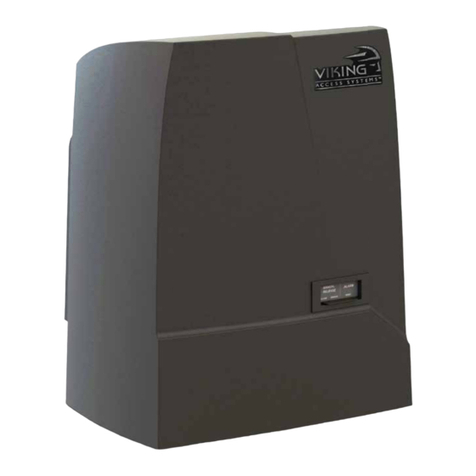
Viking
Viking Designer I User manual
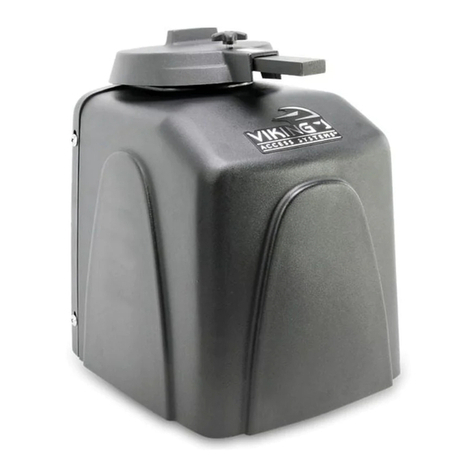
Viking
Viking R-6NX Original instructions

Viking
Viking G-5 User manual
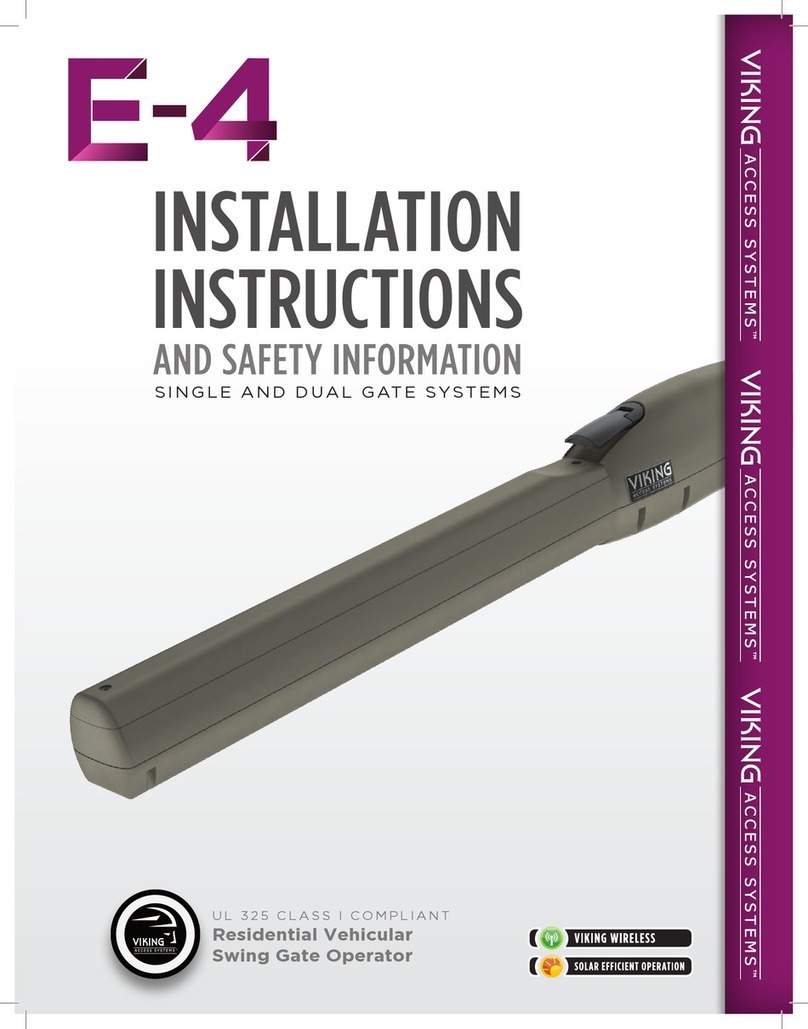
Viking
Viking E-4 User manual

Viking
Viking F-1 User manual
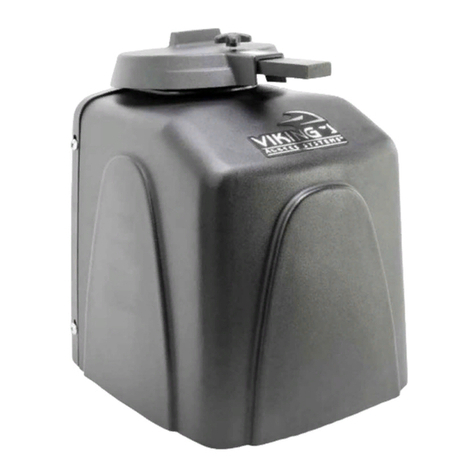
Viking
Viking R-6 Original instructions

Viking
Viking I-770 Original instructions

Viking
Viking X-390 User manual
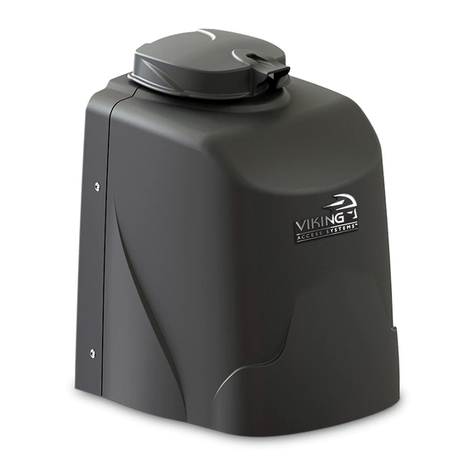
Viking
Viking F-1 User manual
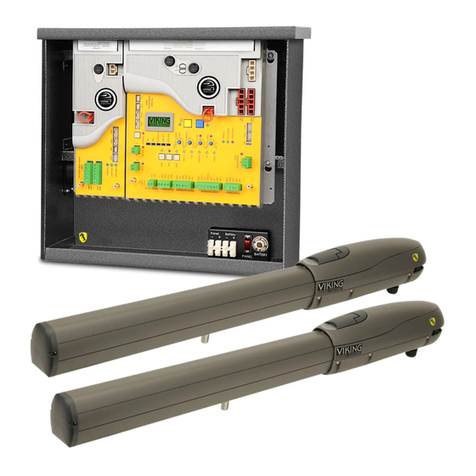
Viking
Viking G-5S User manual
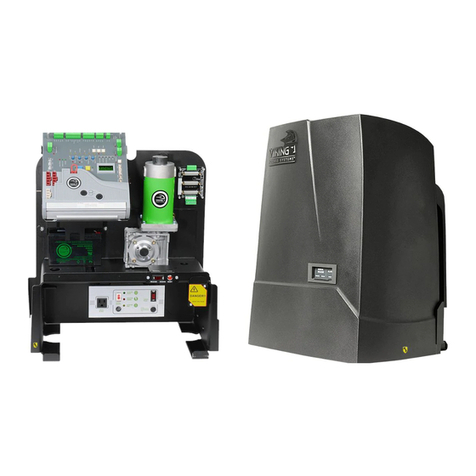
Viking
Viking L-3 User manual
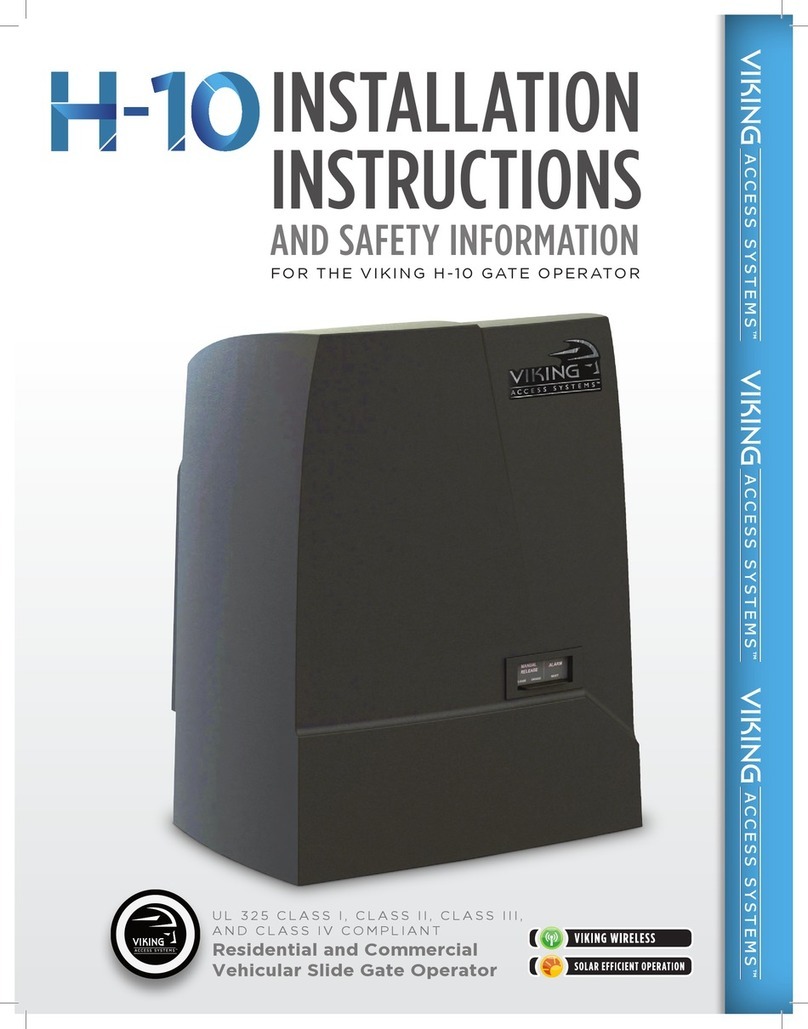
Viking
Viking H-10 Original instructions

Viking
Viking G-5 Original instructions
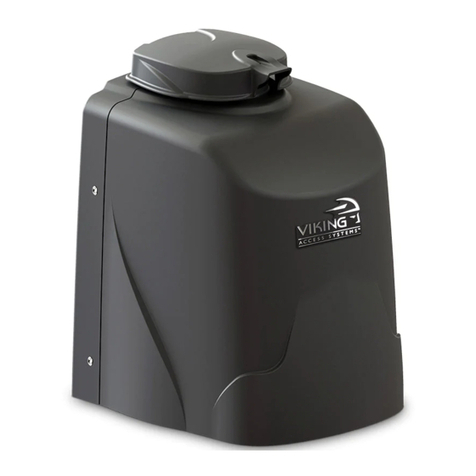
Viking
Viking F-1NX Original instructions

Viking
Viking R-6 Product information sheet

Viking
Viking R-6S User manual

Viking
Viking T-21 Original instructions
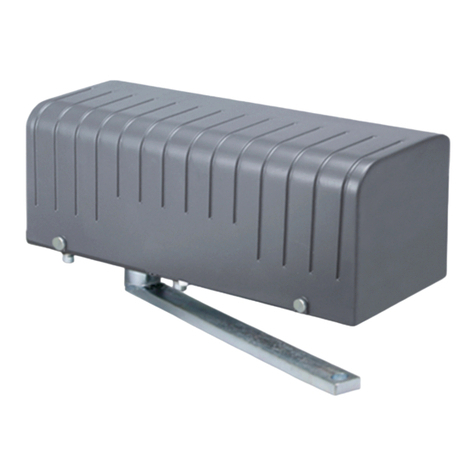
Viking
Viking X-9 Original instructions
